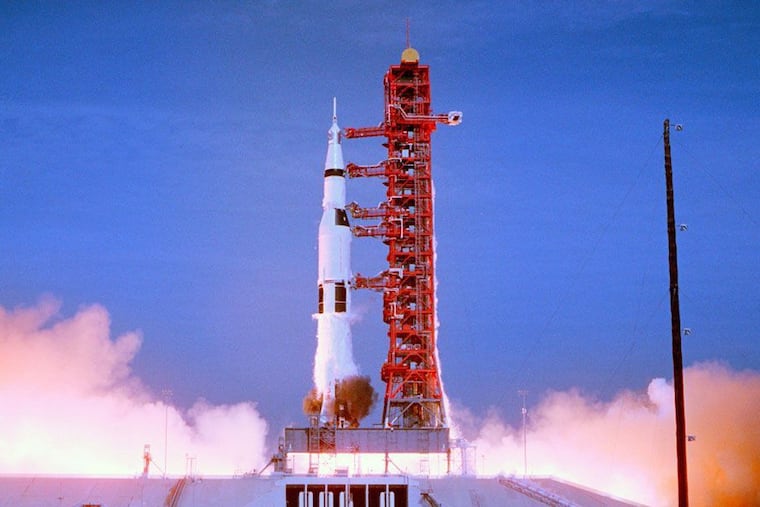The moon landing gets a surprisingly suspenseful IMAX treatment in ‘Apollo 11’ | Movie review
'Apollo 11' uses restored footage to bring the moon landing to audiences in IMAX clarity.

With apologies to Hollywood’s digital-effects artists, there’s something about reality’s power to amaze that remains unsurpassed.
If you want to know what I mean, check out the documentary Apollo 11 in IMAX, so you can see and hear five million pounds of kerosene and liquid gas ignite and lift a shuddering rocket twice the size of the Statue of Liberty slowly from the Florida ground, sending three men toward the heavens for their encounter with the moon, man’s first, in July 1969.
That’s what you’ll see in the impressive Apollo 11, which uses newfangled digital technology in an innovative way, and produces its own brand of cinematic astonishment. The film is adapted from a treasure trove of 65mm (converted to high-resolution 70mm) movie footage found in the vaults of the National Archives, much of it shot as part of a Hollywood/NASA joint venture that was abandoned just before the Apollo 11 mission, but completed with a crew of film pros using large-format cameras, including the kind used to film The Sound of Music and Cleopatra.
Director Todd Douglas Miller found reels of footage almost perfectly preserved, most of it never seen, and (along with his tech team) transferred the film to digital for the high-resolution images you see in Apollo 11 (it will play locally at IMAX theaters in King of Prussia and Neshaminy).
It’s a marvel. The large-format cameras provide images that capture the incredible size and scale of Apollo 11′s Saturn Five rocket in all of its neck-craning glory. The cinematographers capture a broad range of images — there are shots of the astronauts and technicians, but also the tourists and families and space nerds gathered at nearby motels in their station wagons and porkpie hats and Ray-Bans, Minolta SLRs at the ready.
It’s a curious mix of nostalgia and countdown suspense, which mounts even though we know Neil Armstrong, Buzz Aldrin, and Michael Collins reached the moon, touched down, and returned safely. The material is arranged ingeniously by Miller, who coupled the found footage with vintage audio as well, upgraded to digital clarity.
The enlivened, archival images and sound give us the sense that we are there too. We hear the recovered voices of the public address announcers explaining things to us as they happen. That real-time feel is part of the appeal here, and Miller moves deftly among shifting perspectives — onlookers, astronauts, and support personal — to keep the lively narrative moving.
For non-geeks, there is judiciously used graphic material to remind us of the mission parameters and goals — the orbits, the trajectory and path of the space module, with a readout of speed and elapsed time.
It’s surprisingly suspenseful, never more so than when Armstrong and Aldrin (who shot 16mm movie footage and 70mm still footage, also used here) descend to the lunar surface, and we watch the fuel gauge dwindle to near nothing as the Eagle lands.
It’s spectacular, and coupled with the dramatized account of the mission to be found in First Man, part of a one-two movie punch that is amazing in its own way, by virtue of sheer coincidence.
Apollo 11. Directed by Todd Douglas Miller. Distributed by Neon.
Parents guide: G.
Running time: 1 hour, 33 mins.
Playing at: King of Prussia Stadium 16, Neshaminy 24.